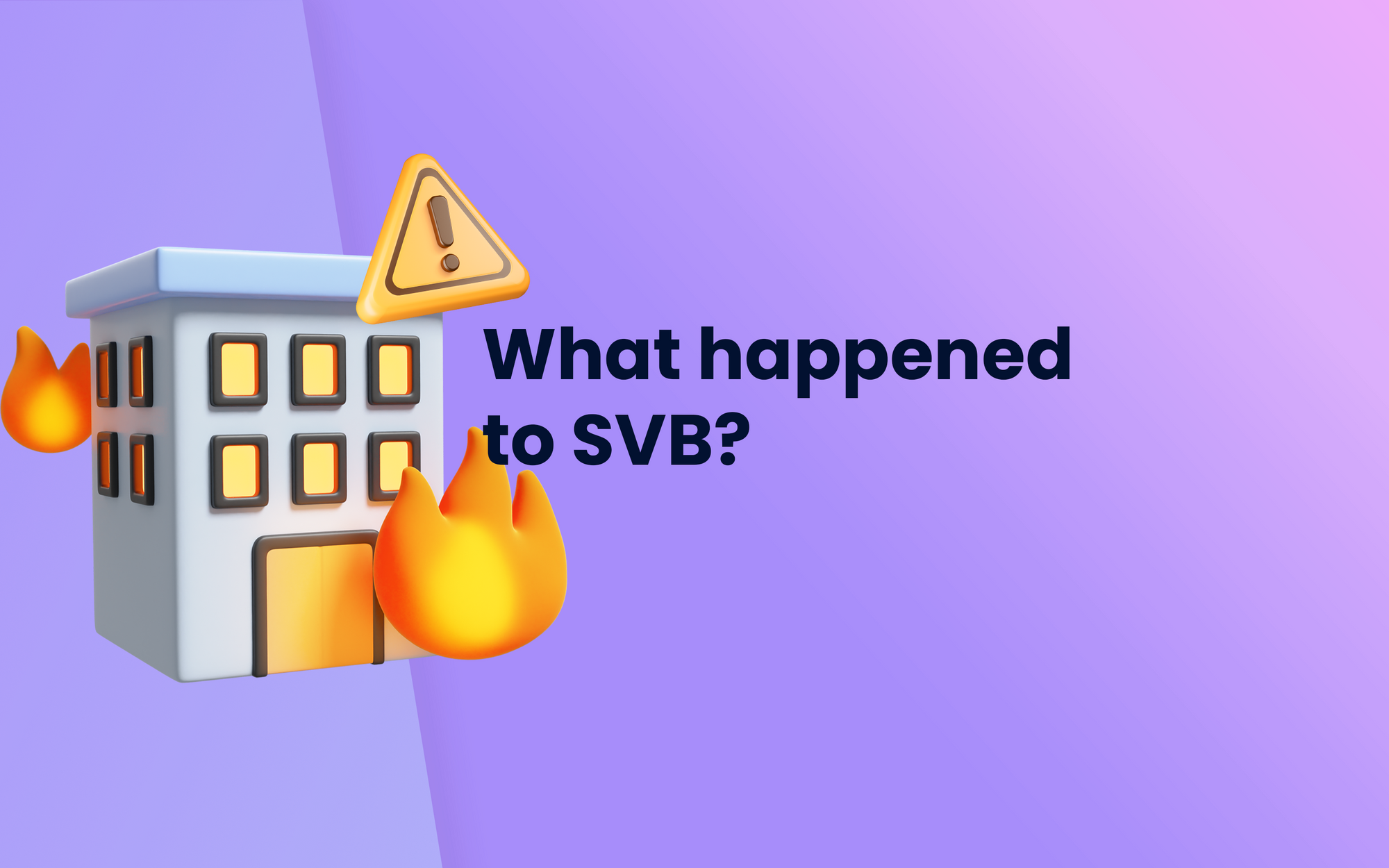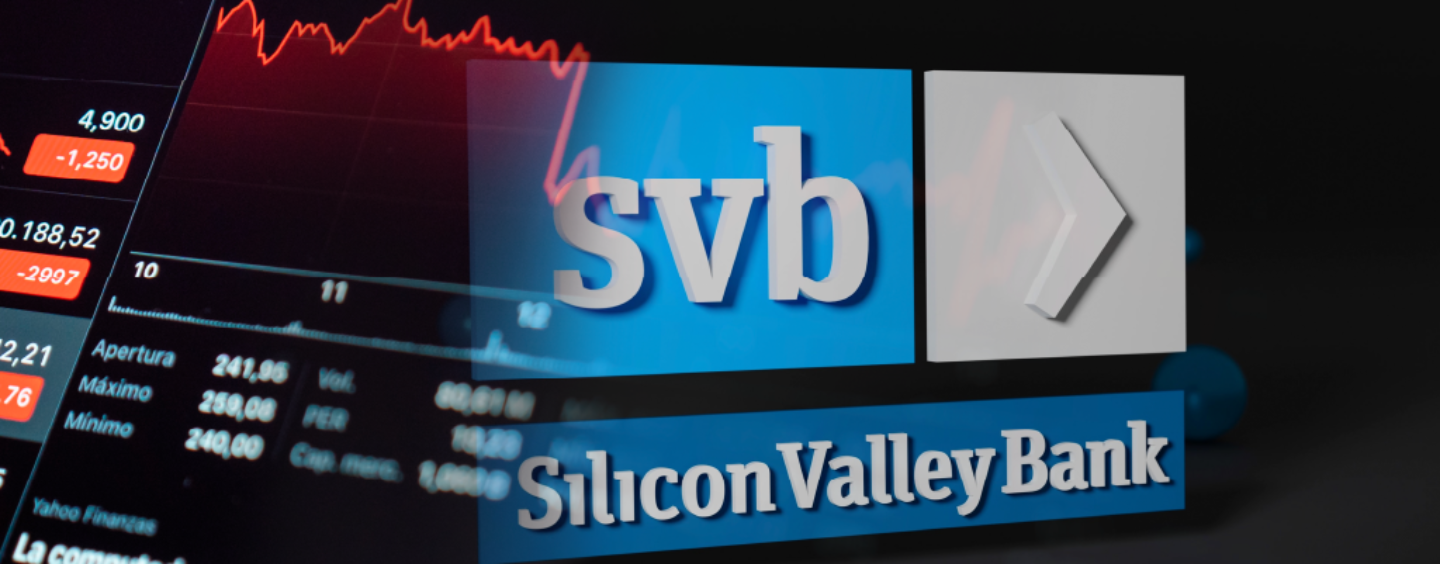What Happened To SVB?
The SVB collapse shook the banking and tech industries greatly. Here’s a rundown of everything that happened.

If you’ve been keeping up with the tech space or even work in it, you’ve probably heard of the Silicon Valley Bank (SVB) collapse by now. The California-headquartered bank, with a tech-focused clientele, sent shockwaves through the industry back in March after its collapse. It went down in the books as the second-largest bank failure in US history.

So, what actually happened? In this post, we’ll be unpacking everything that led up to the incident, what it means for you as an investor, and how SVB’s niche clientele potentially led to its demise.
What is SVB?
You might not have heard of SVB prior to this incident, but that’s somewhat expected for the typical consumer. This is because, although SVB had billions of dollars in deposits, they only ran fewer than two dozen branches and served a very specific group of tech companies, startups, and venture capitalists.
Their prominence in the tech space was unmatched—more willing than most other banks to work with tech startups. For instance, they were frequent sponsors of tech conferences and were greater flexibility in lending money to them despite their relatively low level of assets and free cash flow during their budding stages. In many cases, they also hesitated less in helping early employees obtain personal loans for properties. The 1983-founded company thus grew to become a tech start-up sector favourite and the 16th-largest bank in the country, despite its relatively faint presence among the public.
What Happened to SVB?
Dubbing itself the “financial partner of the innovation economy,” SVB had once claimed to be the chosen bank for roughly half of all US venture-backed businesses back in 2021.
Things seemed to be going well, so what exactly happened?
As you might have noticed, the startup scene experienced exponential growth during the COVID-19 pandemic, which led SVB to benefit indirectly as well. Tech businesses utilised SVB to hold their cash as more and more consumers, who were confined to their homes, spent money on gadgets and related tech. A large portion of it was utilised for business expenses and payrolls.
SVB did what most banks do: it invested the funds from this unexpectedly large inflow of deposits. SVB made the decision to put billions into mortgage-backed securities as well as long-dated US government bonds.
The initial plan was to hold on to the bonds for a long time and see them through to maturity, but the combination of several subsequent events created the perfect storm for it to backfire.
Firstly, the Federal Reserve raised interest rates last year in an effort to lower the rate of inflation. The value of the bank's bond portfolio decreased significantly when rates went higher, as the price of SVB's bonds fell.
At the same time, the tech industry, which had grown for the previous two years, found itself suddenly struggling in 2022. The enormous layoffs announced by organisations like Amazon, Meta, and Microsoft were a major part of the tech industry crisis that caused a great buzz around the world.
Meanwhile, tech firms all over were also progressively withdrawing funds from their bank deposits. For SVB, this signalled the start of the crisis, which only worsened over time.

The California bank, short on cash, had no choice but to sell its bonds for liquidity as more and more SVB clients requested part of or all of their deposits. SVB lost money when it sold a $21 billion bond portfolio that had an average yield of 1.79 percent, which is lower than the current 10-year Treasury yield of roughly 3.9 percent.
After the transaction, SVB had to record a $1.75 billion loss, and it informed investors that it would need to raise capital on March 8.
This announcement sent investors and consumers into a frenzy, and like every other bank run, the situation quickly turned into a self-fulfilling prophecy. The more panic spread, the more customers started withdrawing their deposits, bringing SVB closer and closer to its insolvency doom.
On March 10, roughly 48 hours after the announcement, the bank officially collapsed. This prompted an immediate intervention from the federal government to shut the bank down. With $212 billion in reported assets that SVB had right before it happened, this made the bank’s collapse the largest one to occur since the 2008 global financial crisis.
What Was the Cause of SVB’s Swift Fall?
Many experts say that the bank’s close ties to tech and lack of a diversified clientele led to the seemingly quick collapse of the business.
The tech startup world has always been known to be highly interconnected, with executives and founders openly trading information on text chains and Twitter. In other words, news gets around quickly. Some say that as soon as information about one or two companies withdrawing their funds from a bank surfaces, it spreads like wildfire and serves as a signal for other company leaders to consider the reasons for doing so. Before long, many start contemplating what to do when the whole market panics.
On March 9, the situation became more pronounced when a surge of venture capitalists started explicitly telling their portfolio companies to pull their funds from SVB immediately. Some startup founders were even getting multiple calls per day with the same advice.
Some others have speculated that ever since the cryptocurrency crashes, many tech startup owners have also become acutely aware of such overnight changes and would rather play it safe with their funds, no matter how stable a financial partner may seem. Another possibility is that, given the lack of physical connection most of these younger tech founders have with their bankers and banks, they are less hesitant to jump ship and cut ties with their current banks.
What Does this Mean for Investors?
Naturally, the revelation has alarmed investors and prompted concerns about the possibility of a new financial crisis. Learning how to manage your money and invest during a recession is tough business, after all. US President Joe Biden and Treasury Secretary Janet Yellen have both made an effort to calm the markets.
In addition to guaranteeing investor deposits, the FDIC is providing loan facilities to other banks that own bonds whose value has dropped. Notably, the assets will be valued under the loans at the price they were issued rather than their current market value, which will assist in preventing losses.
Instead of funds coming from taxpayers as they did during the financial crisis, they will come from fees that banks pay into the deposit insurance fund.
While there's always a risk of contagion with bank troubles, the average investor should not be overly concerned. Remember that federal government insurance covers bank deposits up to $250,000, so unless you have more in there than that—in which case, good for you—you're probably going to be fine.